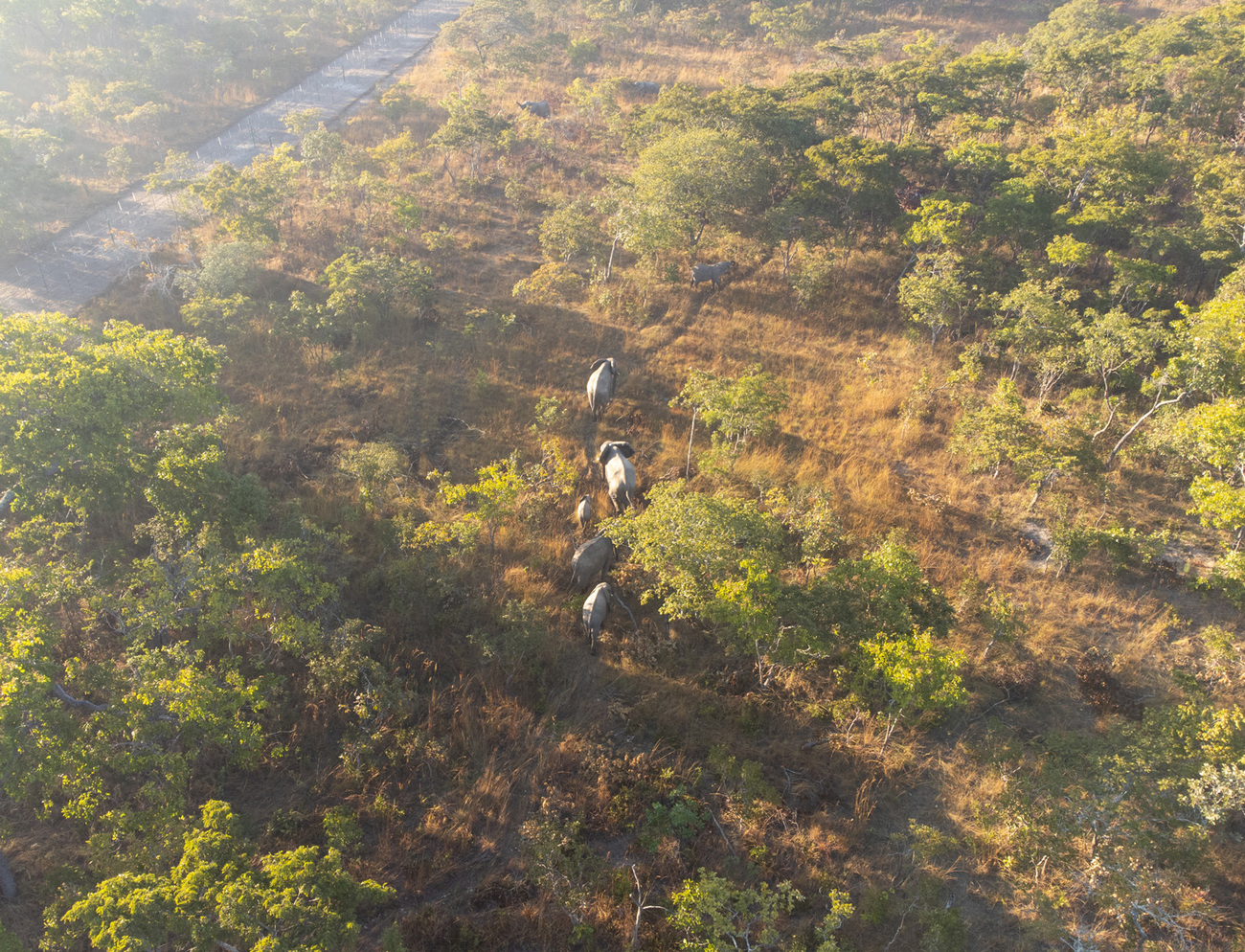Press releases
WhaleAlert: the app to help to protect whales
Read moreifaw's response to elephant related deaths in Malawi

Three people were tragically killed by elephants near Kasungu National Park in Malawi. Our thoughts remain with their families, and we know that nothing we can say or do can make this situation right. We know some people may have questions about how these tragedies unfolded, what we are doing about it, and how it can be prevented in the future.
The situation is that two people were killed in July—one person by one of the recently translocated elephants and the other by a local elephant. Both elephants were lone bulls and according to government protocol, were subsequently euthanised to mitigate any future risks. A third incident took place in September by a mother and calf being herded back into the park by rangers—this was also a local elephant that hadn’t been translocated. The elephants had strayed out of the park, leaving via unfenced sections of the perimeter. The accidents happened when the three men approached the elephants to observe and take close range photographs – something which is warned against.
Kasungu National Park is an 800 square mile park that borders Zambia. It forms part of the Malawi-Zambia Transfrontier Conservation Area (TFCA) agreed by the governments of the two countries and shares an open border with Zambia to allow for free movement of animals. Kasungu National Park used to have a thriving wildlife population, but due to poaching—especially of elephants for their ivory, was left depleted with resident elephant populations dwindling almost to local extinction.
By contrast, Liwonde National Park, approximately 186 miles away, had an increasingly growing population of elephants that was becoming problematic. Translocations are considered the most effective way to address imbalances and redistribute wildlife across the continent to avoid critical loss of biodiversity. The intervention was welcomed by communities near Kasungu to help boost tourism and improve the local economy.
We had worked with the local communities via the regional chief to talk through the timeline of when certain parts of the fence would be completed. It is important to note that there was never a plan to fence the park in its entirety. Constructing fences in certain areas is undertaken to protect communities and make it safer than it was in the past before poaching decimated elephant herds.
Fencing areas to keep elephants in place isn’t a small feat though, especially with a park the size of Kasungu. We have so far funded and constructed 47km of fencing on the eastern boundary of the park, and this work is on-going. We have also committed to fund and repair the extension of a further 50km stretch of Kasungu’s boundary fence. The park cannot be fenced on the western boundary as Kasungu forms the Malawi component of the Malawi-Zambia TFCA, with neighbouring Lukusuzi National Park on the Zambia side. This guarantees elephants free movement, critical for growing the local population back to its former numbers and building resilience.
On a technical level, fence construction is a rigorous and costly undertaking. Fences need to be built into the ground, measure at least 10ft in height, be kept constantly electrified using solar power, and as such, 1km can cost as much as USD$10,000. They need regular maintenance and service to prevent elephant breakthroughs. Even with fencing, breakthroughs still happen, as has been seen in parks that are fully fenced.
Most national parks across the continent, and Malawi, are not fenced, including the largest park—Nyika National Park, as full enclosure would also defeat the purpose of landscape conservation.
We know more can be done to ensure that people and wildlife can thrive together. We will be intensifying our community sensitisation, awareness raising and engagement programme with a view to minimise the human-elephant conflicts. Additional measures are in place to mitigate future potential conflict, including the deployment of Department for National Parks and Wildlife (DNPW) wildlife rangers and Rapid Response Units to areas of potential conflict. The safety and security of people and animals is always our number one priority.
As a partner with the government, IFAW is bound to follow protocol on the management of these areas. Accordingly, we are aware that the government has issued one-off payments to the families of the people who died, and we are also in discussions with the chief of the Kasungu district to explore appropriate additional support for the bereaved families.
Human wildlife conflict is a growing issue as human populations increase, and natural spaces decline. It is inevitable that humans and animals will come into conflict where boundaries of activity overlap. Deaths and injury from such interactions happen across Africa’s landscapes and IFAW and the local communities involved in these situations are not alone in having to deal with such challenges. Investing in and managing human wildlife conflict is a core part of IFAW’s role and is a component of landscape conservation we as an organisation take very seriously.
Moving wildlife to Kasungu National Park was done to provide a long-term solution to enhance biodiversity and boost nature-based tourism. We will continue to look for ways to make the communities that live alongside these large land animals safer. As an organisation, we are committed to learning any lessons necessary to ensure that incidents such as this are minimised. We continue to work with local authorities on this issue.
We offer our deepest condolences to the affected families.
Patricio Ndadzela, IFAW Country Director Malawi and Zambia.
Every problem has a solution, every solution needs support.
The problems we face are urgent, complicated, and resistant to change. Real solutions demand creativity, hard work, and involvement from people like you.
Unfortunately, the browser you use is outdated and does not allow you to display the site correctly. Please install any of the modern browsers, for example:
Google Chrome Firefox Safari